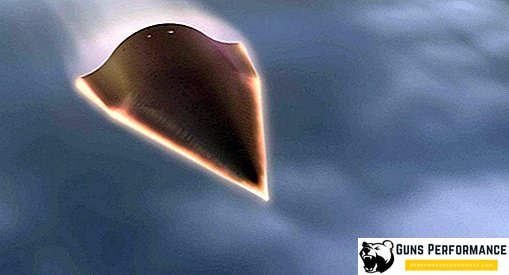As much as mankind exists, there is so much talk about whether there is life on Mars. The fourth planet of the solar system, shining with a faint reddish light on our sky, today remains perhaps the last hope of human civilization in search of a place fit for life in the reachable limits of space. This little red dot in the night sky could become an alternate airfield for humanity.
Like it or not, in fact, will show the ongoing space exploration of the red planet, which in recent years has intensified markedly. If the existence of Martian life is proved, this discovery can be considered the most significant in modern human history.
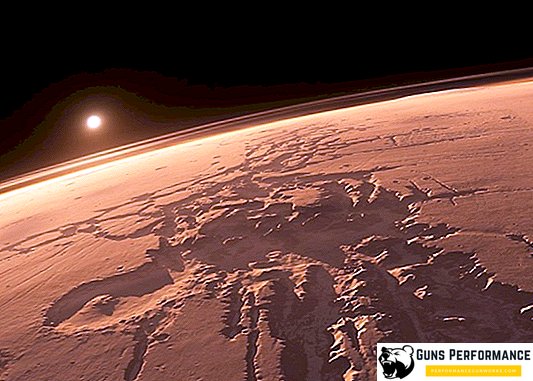
What kind of Mars do we know: a brief description of the planet
Among the terrestrial planets, Mars is of great interest to the scientific community. Scientists around the world have spent tremendous energy and resources to study the heavenly bodies closest to us, but only Mars gave us a chance to hope that the Earth is not so alone in space. Scientific facts about the planet Mars show that this space object has very interesting astrophysical and physical conditions.

The red planet was noticed by the ancient astronomers, oracles and astrologers, they attributed to this celestial body the most unusual qualities and properties that influence the destinies of people. As a rule, the appearance of a bloody star was associated with the beginning of hostilities, with the onset of major and serious trials. In this regard, our ancestors gave this small planet a formidable name in honor of the god of war - Mars. In fact, the red color of the light spectrum of a distant star is due to the large amount of iron oxide contained in the surface layer of the Martian crust. This became known already in the modern era, when telescopes allowed a cosmic god to look into the face.
Galileo Galilei conducted scientific observations of Mars for the first time back in 1610. Already in the XVII century, astronomers added information about the surface of the planet. Dark areas and light areas were identified on Mars that corresponded to the relief features. Bright polar regions caused the greatest interest, but the true reason for this color of the planet's surface at the poles was discovered only in the 20th century.
Observations by the Italian astronomer Giovanni Schiaparelli, made with a telescope in 1877, suggested the existence of intelligent life in the expanses of Mars. The scientist saw the faults of the Martian crust seen in the telescope lens as an artificially created system of irrigation canals.
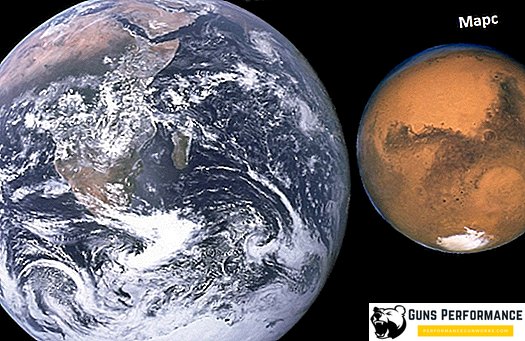
Despite the fact that the terrible Mars is adjacent to the Earth, in terms of the brightness of the light, it is inferior to Venus and Jupiter. The apparent magnitude of Mars is −2.91m. Among the terrestrial planets, the red planet is the last. Further, beyond the orbit of Mars, the asteroid belt and the cold world of the gas giants begin. One can clearly see a red star in the sky every two years, during a great confrontation. During these periods, the fourth planet is at the minimum distance from our world. The distance to the Earth is only 77 million km.
Considering Mars through telescopes, astrophysicists obtained the following data about this space object:
- diameter of the space object;
- the state and shape of the orbit of the planet;
- the distance to our main body and to the Earth;
- the time of the rotation of Mars around the Sun and around its own axis;
- what are the satellites of Mars.
Already in our time has become known information about the Martian atmosphere and the real relief of a small red planet. The surface of the planet Mars, the composition of the Martian crust and the state of the polar regions are studied in detail.
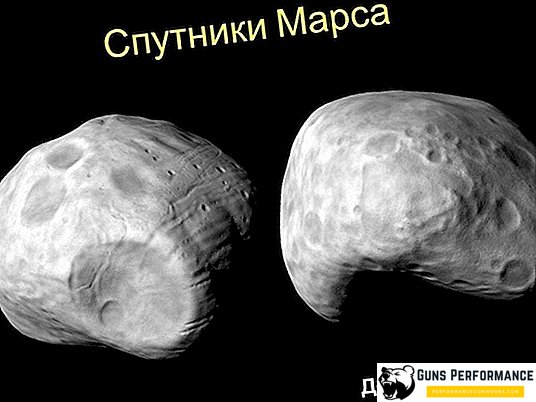
The size of Mars is half the Earth parameters. The diameter of the terrible cosmic god is only 6779 km, and its average radius is 0.53 of the radius of the planet Earth. The weight of the planet is 6.4169 x 1023 kg. This is the main reason for the fact that Mars has a lower density compared to Earth - 3.94 g / cm3, against 5.52 g / cm3 of the Earth. In this aspect, the value of gravity on the Martian surface, which is 38% of the earth's gravity, is curious. In other words, a person weighing 80 kg on Earth will weigh only 25 kg on Mars.
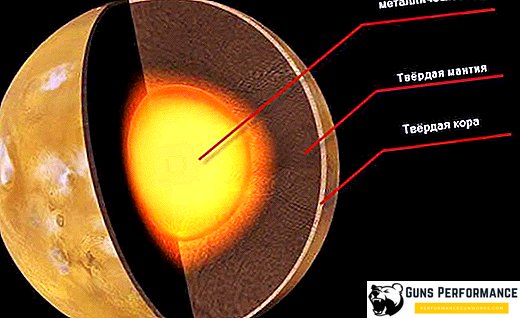
Like other terrestrial planets, Mars is a dense, massive stone body. With such physical parameters, the planet next to us has a similar structure. In the center of the Martian ball there is a rather large core with a diameter of almost 3000 km. The core of the planet envelops the mantle layer 1800-2000 km thick. Martian crust is much thicker than the earth and is about 50 km. This thickness of the crust speaks of the turbulent tectonic past of the planet - tectonic processes on Mars ended much earlier than on Earth.
The orbit of Mars is quite interesting from the point of view of astrophysics. She has a great eccentricity, providing uneven movement of the planet around the sun. At perihelion, the planet Mars flies at a distance of 209 million km from the Sun. In aphelion, this distance increases to 249 million km. This unusual position of the orbit is explained by the influence of the Earth and Jupiter - the planets closest to Mars. The period of revolution around our star exceeds earth parameters. Given that the speed of Mars in orbit is just over 24 km / s, the Martian year is almost twice as long as the Earth and is 686 Earth days. But time on the planet flows the same way as on earth and the Martian day is almost the same as on our planet - 24 hours and 37 minutes. A small planet rotates rather imposingly around its own axis, which has a tilt angle of 25 ° - almost the same as that of our blue planet. This provides the same change of seasons as on Earth. However, at the same time, temperature regimes in both Martian hemispheres significantly differ from terrestrial parameters.
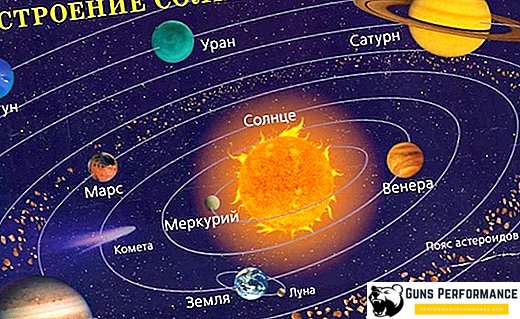
Why is Mars interesting for earthlings?
From the point of view of astrophysics, Mars is very similar to our earthly world. Despite the fact that the size of the planet is smaller than the Earth and is located far away from the Sun, many parameters of our neighbor are identical to those of the Earth. For these two planets, the physical parameters are the same.
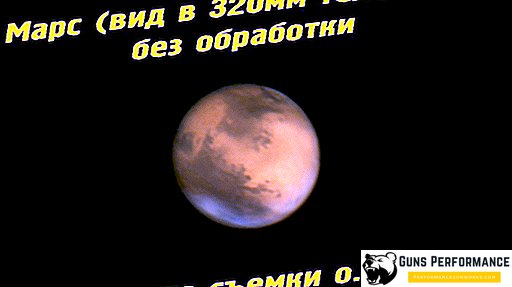
The results of observations of the red planet through telescopes gave weighty reasons to assume the existence of Martian life. The result of close study was the map of Mars, compiled in 1840. A closer study of the surface of the planet fell on the second half of the XIX century. The secrets that our neighbor in space concealed in themselves became the reason for numerous insinuations. The rich imagination of scientists and lovers of sensations settled Mars intelligent beings. The study of the spectrum of the Martian atmosphere allowed us to identify the spectral lines corresponding to water molecules, which only strengthened the position of supporters of the theory of the existence of Martians. Back in 1897, English science fiction writer HG Wells created the best-selling science fiction novel War of the Worlds, giving the main place in the book to bloodthirsty newcomers from the red planet.

During the 20th century, the topic of the existence of an extraterrestrial Martian civilization was constantly fed by new scientific data and research that unraveled the mysteries of Mars. Improving the quality of optical telescopes gave another impetus to the emergence of new ideas and theories regarding the presence of intelligent life on Mars.
The peculiarities of the surface relief prompted the scientist Percival Lowell to the existence of Martian canals, which really resembled themselves artificially created structures. It is appropriate to recall the stone face found on the surface of the red planet and objects resembling pyramids and other religious buildings of earthlings.
It is worth saying that many of the fantastic discoveries actually turned out to be another assumption. Subsequent space explorations of our neighbor opened the veil of secrets in the second half of the 20th century. The pyramids and the stone mask turned out to be only a distorted image of the features of the Martian surface. A similar picture with the story of the Martian canals. The photographs obtained from the spacecraft "Viking", "Mariner" and "Mars" it became clear that these are not the channels, but the giant faults of the Martian crust, caused by the turbulent volcanic youth of the planet.
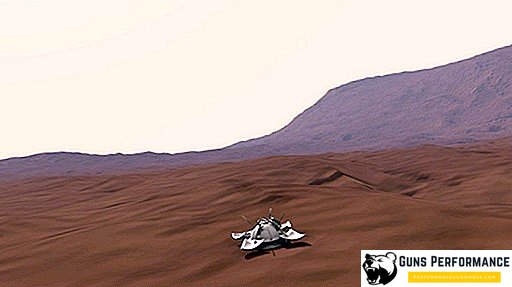
From the point of view of science, the chances of finding and finding any forms of life on Mars look more modest. Nevertheless, attempts to find life on Mars or try to colonize the planet have good reasons for themselves and have become a topic for Mars’s ambitious space research program, the flight and landing of a person on the surface of the red planet.
Interesting details and characteristics of Mars
In the 1920s, data on the temperature regime of the red planet were first obtained. The temperature on the surface of Mars corresponds to terrestrial parameters in the most extreme areas of our planet. The efforts of astrophysicist Kuiper managed to obtain information on what the atmosphere of the red planet actually consists of. Previously it was assumed that the gas envelope around the planet is mainly saturated with carbon dioxide. Kuiper managed to pinpoint that. The main component of "Martian air" is carbon dioxide. The amount of CO2 in the Martian atmosphere is 12 times the amount of terrestrial carbon dioxide.
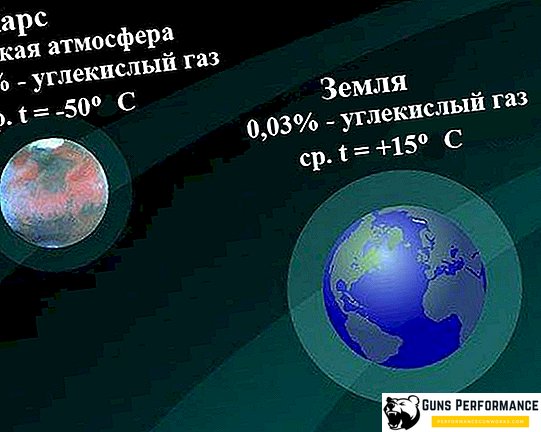
This discovery gave reason to believe that this amount of carbon dioxide creates a greenhouse effect on Mars, the result of which could be an improvement in the Martian climate. At present, it has been established that the average temperature of the gas envelope near the surface of the planet varies between 13-45 ° C below zero. Despite the fact that the Martian atmosphere is very rarefied, there are certain meteorological phenomena on this planet that form its climate.
Even the extremely small presence of water vapor in the atmosphere of Mars allows water clouds to form at altitudes of 15-30 km. Above, clouds formed from carbon dioxide reign. Temperature drops at the border of the polar regions with equatorial regions create meteorological conditions for the birth of vortices. In recent years, thanks to images taken from spacecraft, cyclonic eddies have been discovered on the Martian surface. Discovered on Mars and precipitation. This weather phenomenon is not typical for a space object with such a rarefied atmosphere. Back in 1979, fallen snow was found in the landing area of the Viking-2 spacecraft. Later, already in 2008, the Phoenix rover recorded the fact of precipitation in the upper parts of the surface layer of the Martian atmosphere.
The dust storms that have been on the surface of Mars for a long time darken the picture of the Martian cloudlessness.
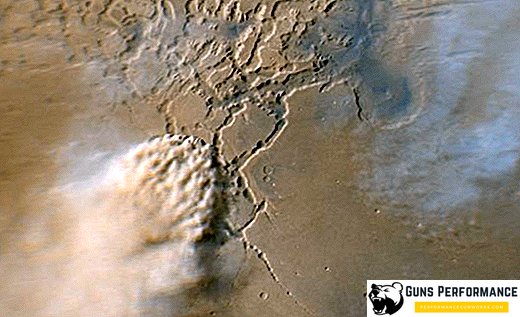
Discovered polar ice at the south pole of the planet suggests that our cosmic neighbor is not a lifeless stone desert. The poles on Mars are the least studied area, the ice caps in these areas allow the existence of liquid water in the deep layers of the Martian crust.
Mars is interesting not only for climatologists who have managed to disassemble the planet's atmosphere on the shelves. The geological structure of the planet and its relief are also of great interest. Mars has traces of a cosmic cataclysm of universal scale. Evidence of the collision of the planet with a huge space object in the early stages of formation is a huge crater, discovered in the North Basin. This is the largest crater in the solar system and has a diameter of 8.5 thousand km. The size of the largest solar system volcano is also striking. The extinct volcano Olympus has a diameter of 85 km volcanic crater, reaching a height of 21 kilometers.

These and many other facts from the history of the red planet are of considerable interest to the scientific community. The availability of Mars to study makes it the most attractive and interesting space object in our immediate environment.







